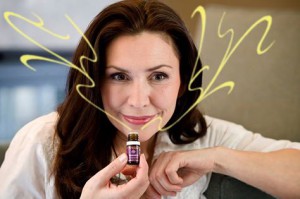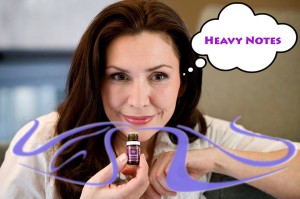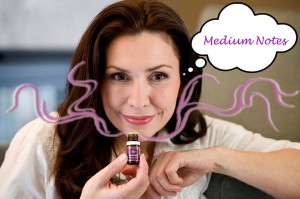Aromatic plants and trees produce essential oils for protection against other plants, herbaceous insects and mammals, to signal other plants and animals (communication), and to attract insects for pollination. Essential oils are natural – not man-made.
When essential oils are properly distilled from aromatic plants they are bioactive and pure. Each essential oil is composed of 100-300 unique molecules – each with its own aroma.
 When you smell an essential oil you may describe it with certain characteristic “light notes”, medium notes” and “heavy notes”. These “notes” result from the unique aroma of different molecules.
When you smell an essential oil you may describe it with certain characteristic “light notes”, medium notes” and “heavy notes”. These “notes” result from the unique aroma of different molecules.
The “light notes” usually result from 10-carbon molecules called “monoterpenes”. Monoterpenes are volatile molecules that spread quickly in the air, yet their aroma does not last long (e.g., alpha-pinene).
Most tree-derived essential oils, such as Idaho Blue Spruce, Idaho Pondersosa Pine, Tsuga, Pine, and Hinoki have a high concentration of “light note” monoterpenes.
Other oils with a high percentage of high notes are: Bergamot, Tangerine, Orange, Lemon, Petigrain, Melaleuca, Lemongras, Cardamom, Peppermint, Cajeput, Eucalyptus, Myrtle, Pine, Juniper, Rosemary.
The “medium note” aromas result from oxygenated monoterpenes. These “medium note” molecules tend to be described as “floral, sweet, pleasing, flowery” (e.g., linalool, linalyl acetate, bornyl acetate, decanal).
Plants naturally oxygenate (add oxygen to) monoterpenes to form molecules known as aldehydes, esters, alcohols, ethers, and ketones – all very aromatic molecules.
The “medium note” molecules tend to hang in the air longer and remain on the skin longer. Lavender (linalool), and Wintergreen (methyl salicylate) essential oils have a high abundance of “medium note” molecules.
Other oils with a high percentage of medium notes are: Lavender, Rose, Cypress, Geranium, chamomile, Ginger, Jasmin, Ylang Ylang, Clary Sage, Melissa, Oregano, Majoram, Fennel, Yssop, Sage, Eucalyptus, Myrtle, Pine, Juniper, Thyme, Cypress, Neroli.
 Finally, the “heavy note” molecules are 15-carbon sesquiterpenes, oxygenated sesquiterpenes, and 20-carbon diterpenes. These “heavy notes” are described as: “woody, heavy, musky, lasting” (e.g., copaene, santalene, aromadendrene, germacrene D, bisabolol).
Finally, the “heavy note” molecules are 15-carbon sesquiterpenes, oxygenated sesquiterpenes, and 20-carbon diterpenes. These “heavy notes” are described as: “woody, heavy, musky, lasting” (e.g., copaene, santalene, aromadendrene, germacrene D, bisabolol).
The “heavy note” molecules stay on the skin for hours and days. The “heavy note” molecules are responsible for the lasting aroma (after the “light note” and “medium note” molecules have dissipated).
Essential oils such as Royal Hawaiian Sandalwood and Hong Kuai are composed of high percentages of “heavy notes” molecules.
Other oils with a high percentage of heavy notes are: Cedarwood, Frankincense, Cistus, Patchouli, Angelica, Myrrh, Pepper, Helichrysum, Vetiver, Rosewood.
Essential oil aroma is related to essential oil molecules – your nose detects the molecules.





